Harlequin rasbora - Trigonostigma heteromorpha
Scientific name: Trigonostigma heteromorpha
Common name: Harlequin rasbora
Family: Cyprinidae
Usual size in fish tanks: 3 - 5 cm (1.18 - 1.97 inch)
014
Recommended pH range: 5 - 7
Recommended water hardness: 4 - 12°N (71.43 - 214.29ppm)
0°C 32°F30°C 86°F
Recommended temperature range: 23 - 28 °C (73.4 - 82.4°F)
The way how these fish reproduce: Spawning
Where the species comes from: South Asia
Temperament to its own species: peaceful
Temperament toward other fish species: peaceful
Usual place in the tank: Top levels
Tank Requirements
Harlequin Rasboras (Trigonostigma heteromorpha) thrive in a well-planted aquarium with ample swimming space at the top levels. As schooling fish, they need to be kept in groups of at least 6 to 8 individuals, which helps them feel secure and exhibit their natural behaviors. A minimum tank size of 40 liters (10 gallons) is recommended to provide enough space for a small school.
These fish prefer soft, slightly acidic water, with a pH range of 5.0-7.0 and water hardness between 4-12°N (71.43-214.29 ppm). The ideal temperature range is 23-28°C (73.4-82.4°F). To mimic their natural habitat, include plants such as Cryptocoryne and Amazon Swords, along with some floating plants to provide shaded areas. A dark substrate will enhance their colors, and a gentle filtration system will maintain calm water conditions, which they prefer.
Tankmates
Harlequin Rasboras are peaceful and do well in community aquariums with other similarly non-aggressive fish. Ideal tankmates include:
- Neon Tetra (Paracheirodon innesi)
- Rummy Nose Tetra (Hemigrammus bleheri)
- Dwarf Gourami (Colisa lalia)
- Pink Corydoras (Corydoras axelrodi)
They are best kept with other peaceful species that thrive in similar water conditions, avoiding larger, more aggressive fish that may stress them or see them as food.
Food and Feeding
Harlequin Rasboras are omnivorous and will accept a variety of foods. A high-quality flake or micro-pellet food can be used as their staple diet. To provide balanced nutrition, offer live or frozen foods such as daphnia, bloodworms, and brine shrimp, which help bring out their vibrant colors. They also enjoy small, crushed vegetable-based foods. Feeding them twice a day in small amounts ensures they get enough nutrition without polluting the water. Make sure all food particles are small enough to fit into their mouths, as they have relatively small mouths.
Sexing
Sexing Harlequin Rasboras can be subtle. Males are typically slimmer and have a brighter coloration, especially during breeding periods. Females are slightly rounder, particularly when carrying eggs, and may have a more subdued hue compared to the males.
Breeding
Harlequin Rasboras are relatively easy to breed in captivity. Set up a separate breeding tank with plenty of fine-leaved plants such as Java Moss or spawning mops. The water should be soft and slightly acidic, with a pH around 6.0 and a temperature of 26°C (78.8°F) to encourage spawning.
The female will scatter up to 100 eggs among the plants, which will hatch in approximately 24 hours. It is crucial to remove the parents after spawning, as they may eat the eggs. The fry can initially be fed powdered fry foods or infusoria until they are large enough to accept crushed flakes or baby brine shrimp. Maintaining pristine water conditions in the fry tank is essential for their survival and growth.
Lifespan
With proper care and a well-maintained environment, Harlequin Rasboras can live up to 6 years in captivity, making them a rewarding addition to a peaceful community tank.
Origin
Harlequin Rasboras are native to Southeast Asia, primarily found in slow-moving waters in Thailand, Malaysia, and Indonesia. They inhabit forest streams and swamps with dense vegetation, where the water is soft, slightly acidic, and often shaded by overhanging foliage.
Short Description
Trigonostigma heteromorpha, commonly known as the Harlequin Rasbora, is a popular schooling fish that adds a dynamic splash of color to community aquariums. With its distinctive black triangular patch on the body and peaceful nature, it makes an excellent choice for aquarists of all levels. To truly appreciate their natural behavior and vibrant appearance, keep them in groups of six or more, in a well-planted tank with soft, acidic water conditions.
Pictures
Bought by aqua-fish.net from jjphoto.dk.





 Bala
Bala  Spotted
Spotted  Golden
Golden  Tinfoil
Tinfoil  Congo
Congo  Blue-barred
Blue-barred  African
African  Butterfly
Butterfly  Olivegreen
Olivegreen  Morse
Morse  Jerdon’s
Jerdon’s  Mosquito
Mosquito  Dwarf
Dwarf 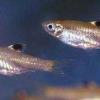 Eyespot
Eyespot  Goldfish
Goldfish  Penguin
Penguin  Siamese
Siamese  Koi
Koi  Pearl
Pearl  Glowlight
Glowlight  Crossbanded
Crossbanded 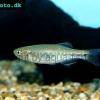 Yoma
Yoma  Orange
Orange 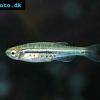 Dwarf
Dwarf  Zebra
Zebra  Rose
Rose  Red
Red  Arulius
Arulius  Tambraparni
Tambraparni  Fiveband
Fiveband  Bengal
Bengal 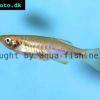 Tiger
Tiger  Malabar
Malabar  Queen
Queen  Hora
Hora  False
False  Redtail
Redtail  Rainbow
Rainbow  Flying
Flying  Garra
Garra  Black
Black 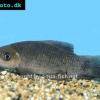 Purple
Purple  Burmese
Burmese  Dwarf
Dwarf  Isok
Isok  Rosy
Rosy 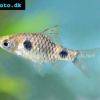 Two
Two 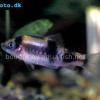 Melon
Melon 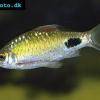 Black-spot
Black-spot  Golden
Golden  T-Barb
T-Barb  Ruby
Ruby  Checkered
Checkered  Rhomb
Rhomb  Gold
Gold  Tiger
Tiger  Cherry
Cherry  Brittan’s
Brittan’s 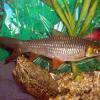 Greater
Greater  Long-band
Long-band  Twospot
Twospot  Reticulate
Reticulate  Cherry
Cherry  Denison
Denison  White
White  Lambchop
Lambchop